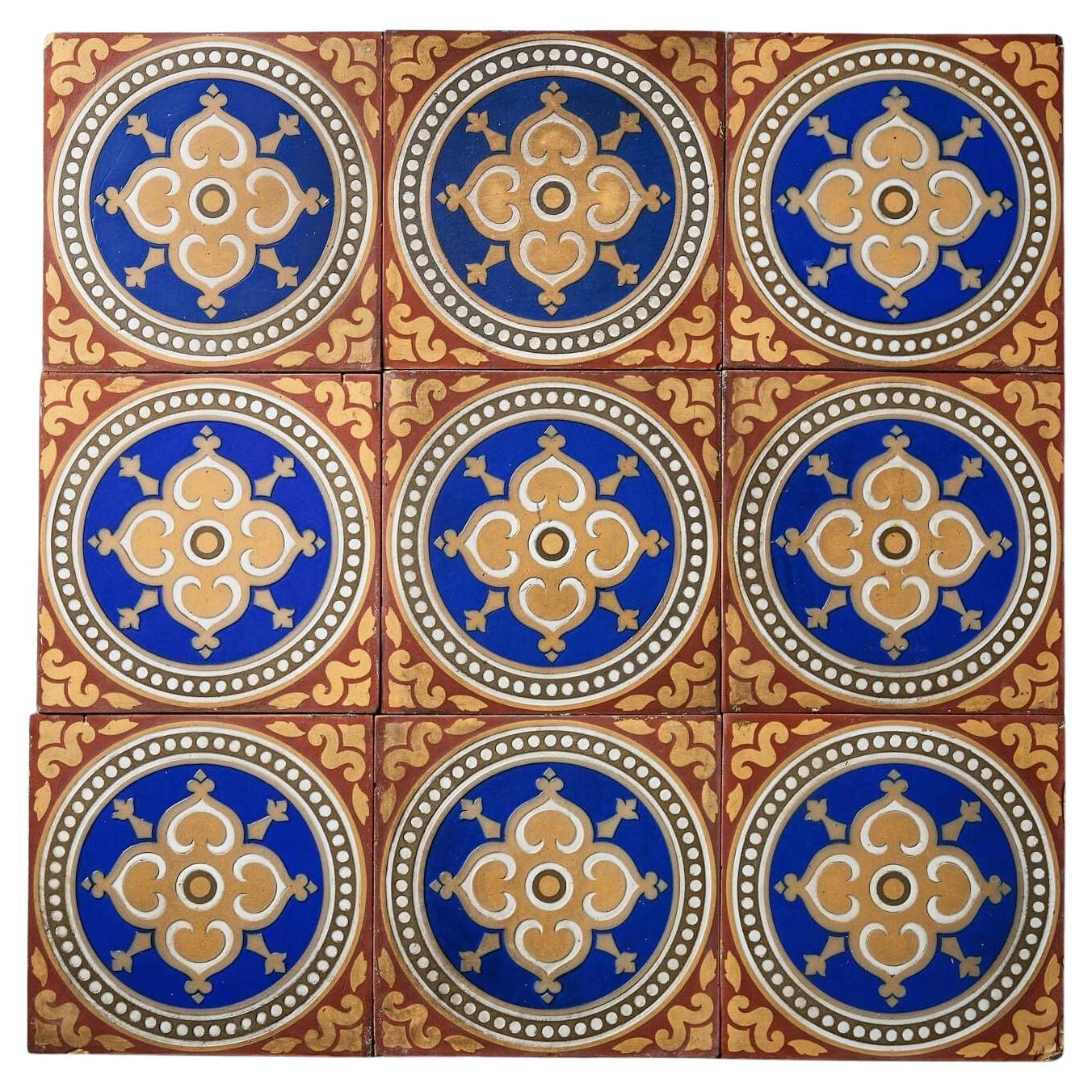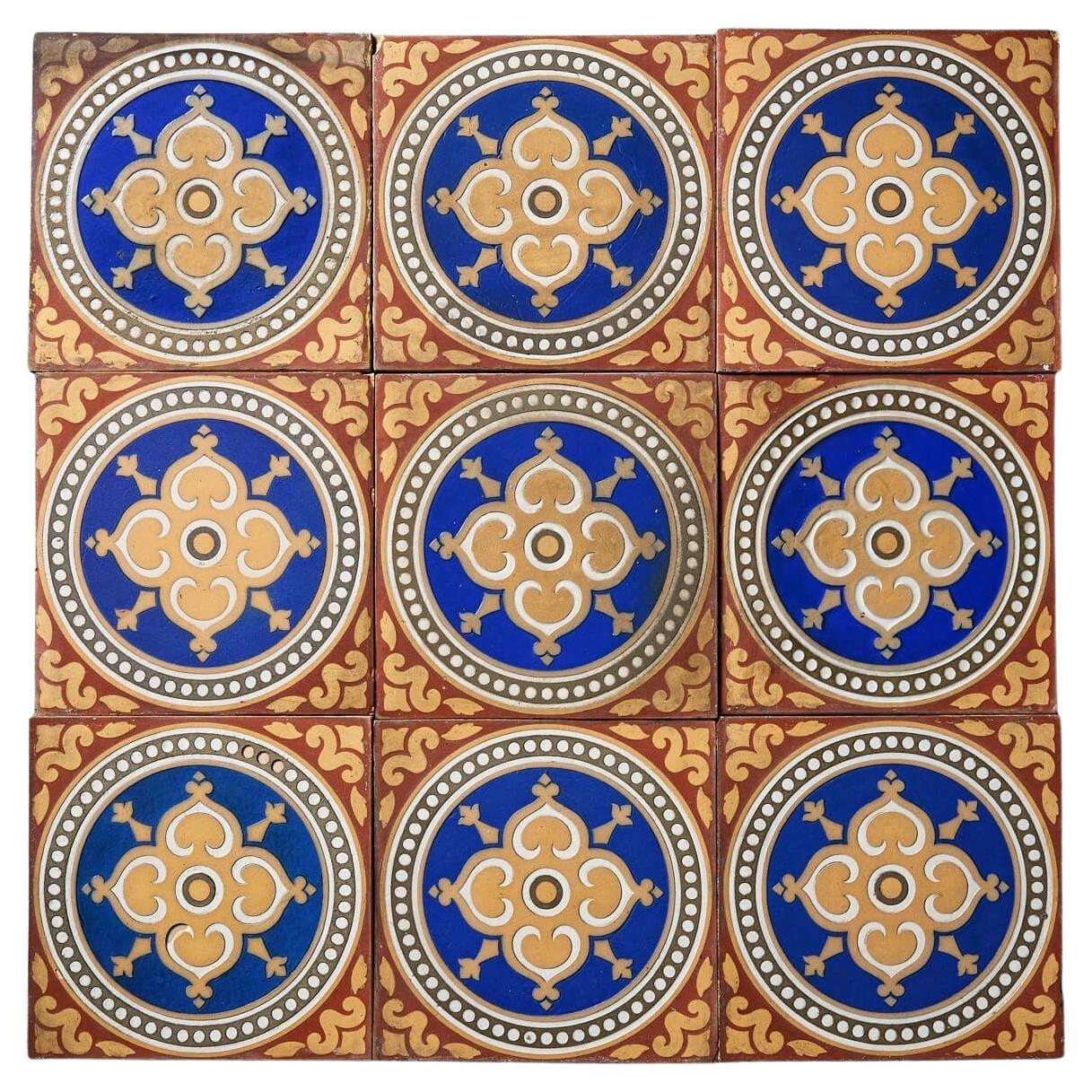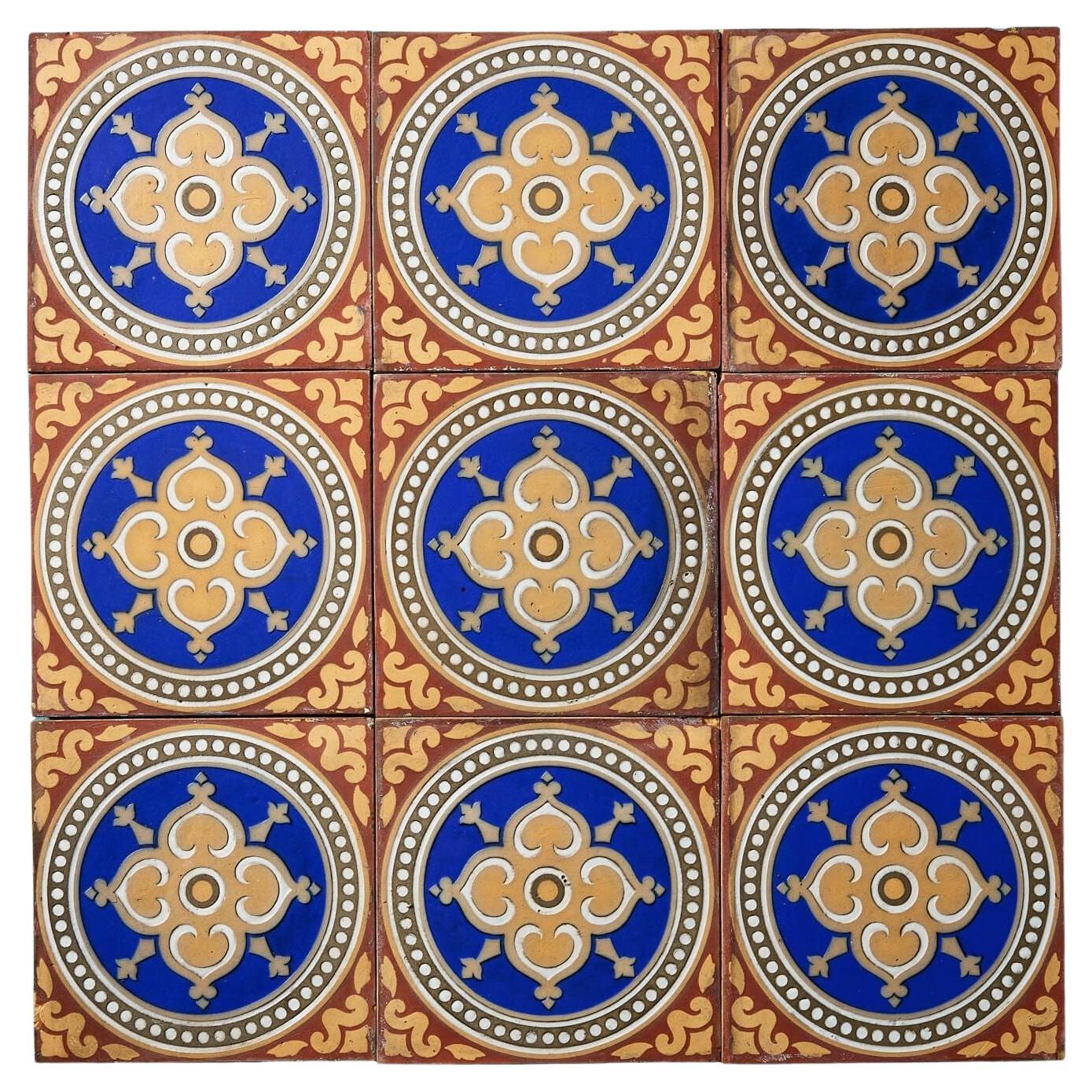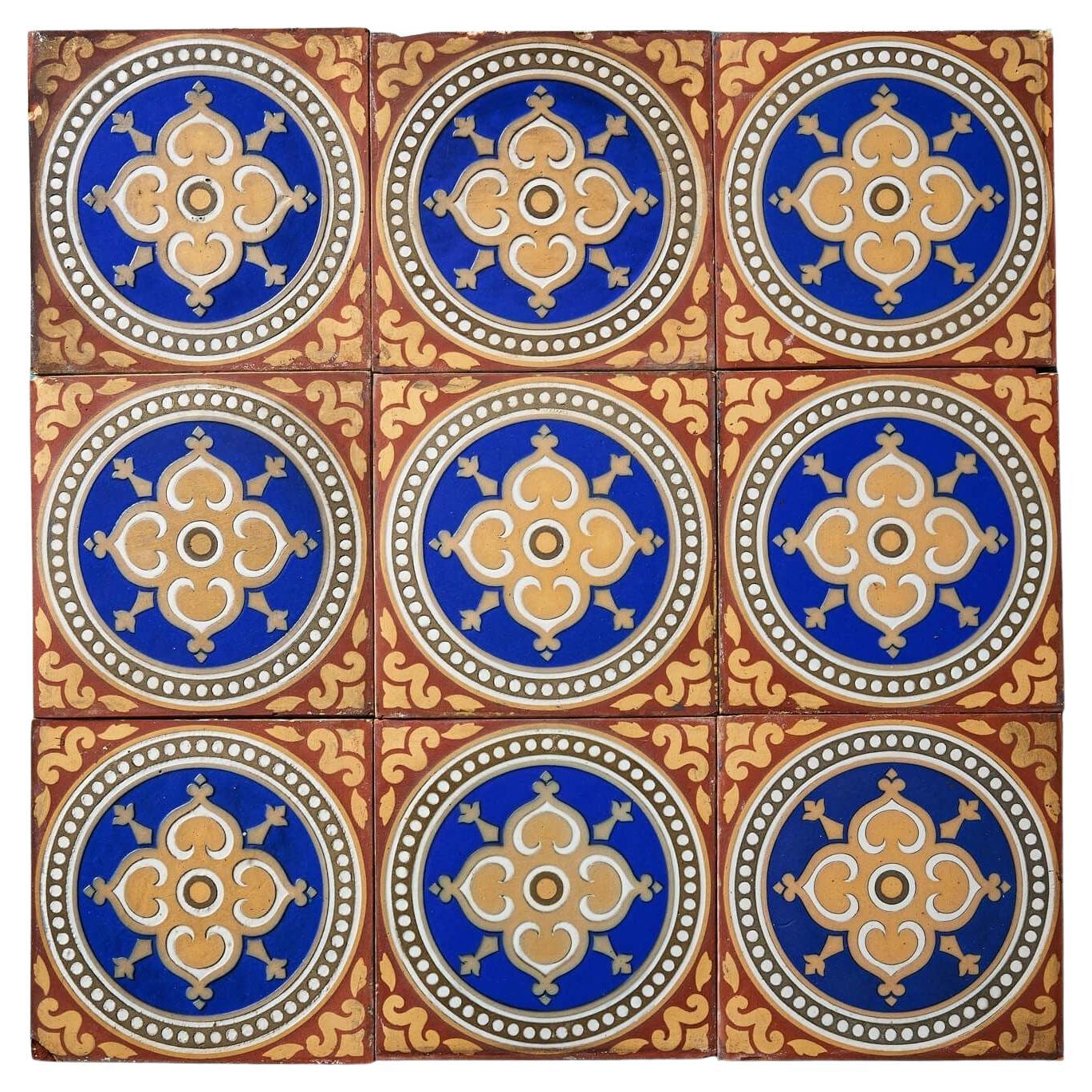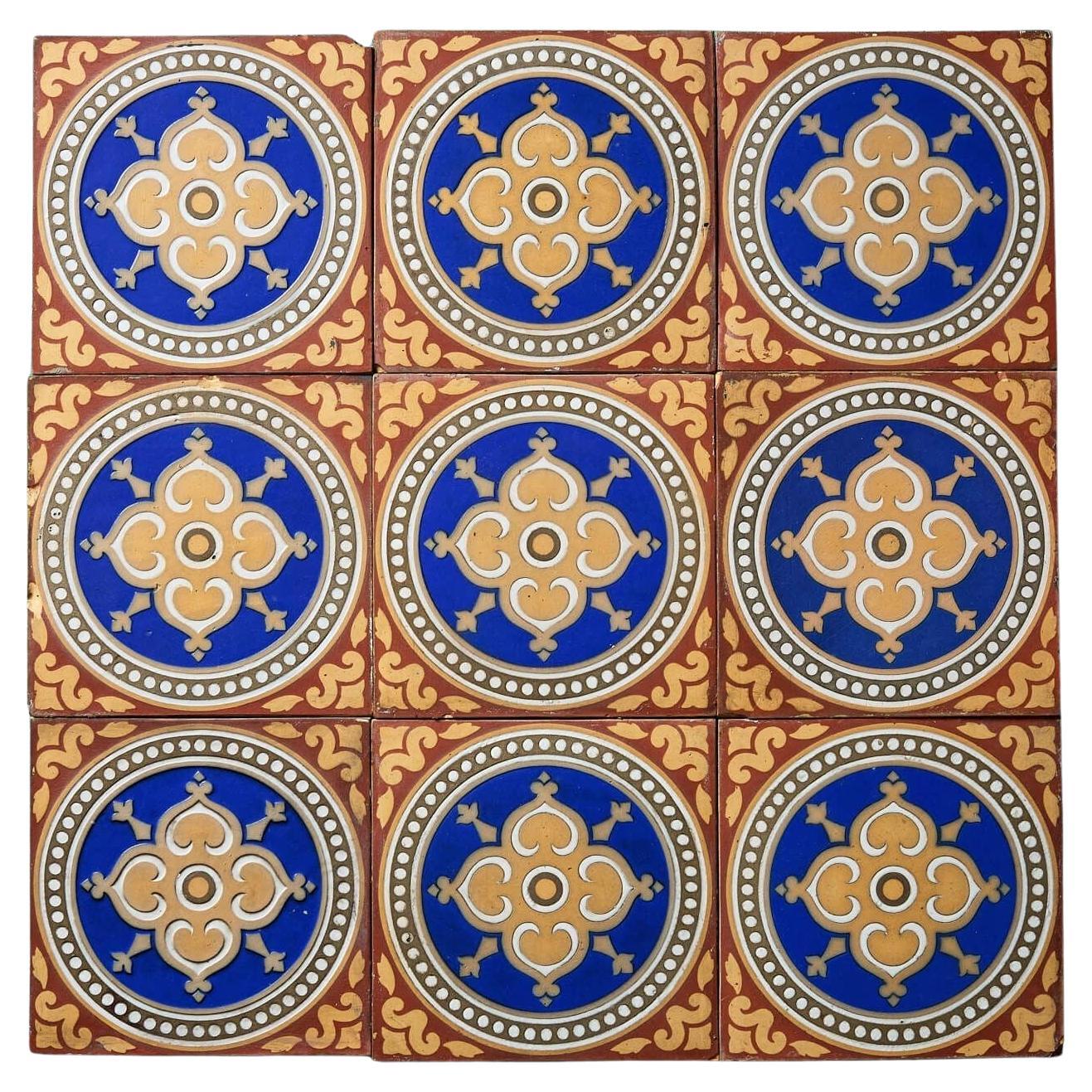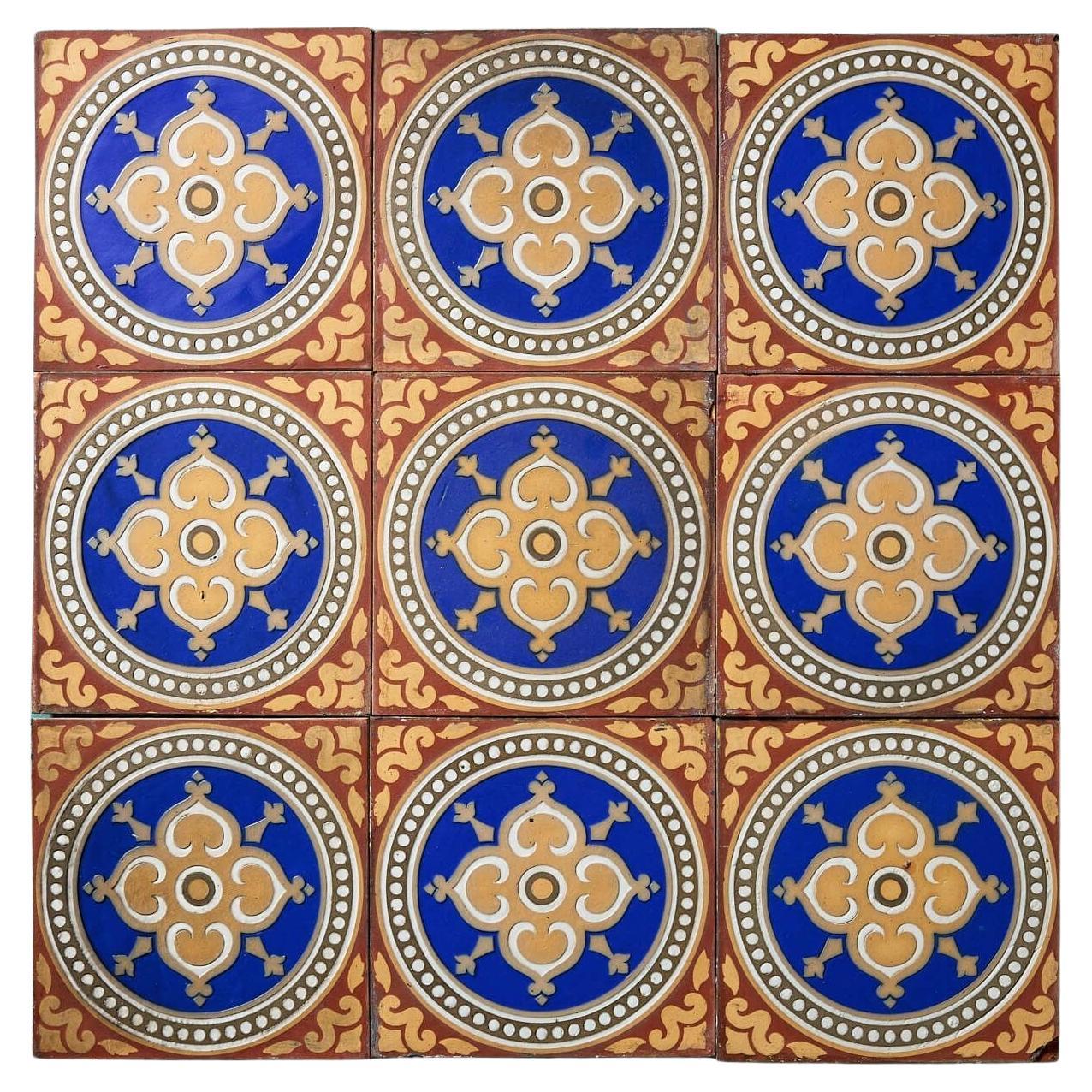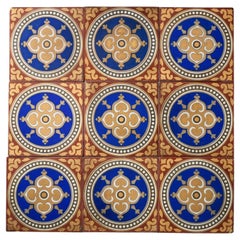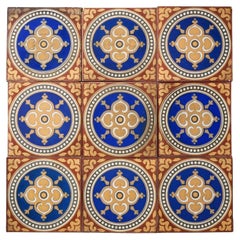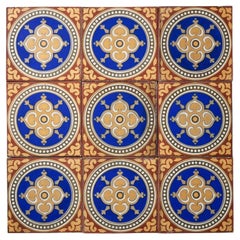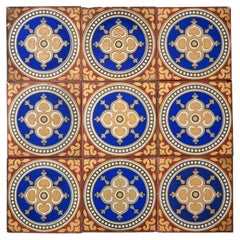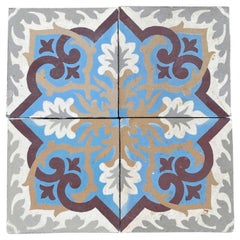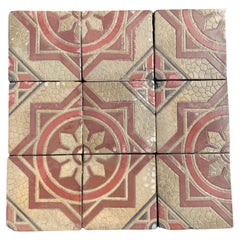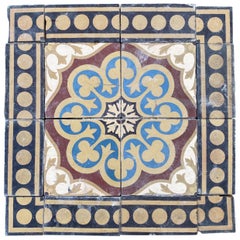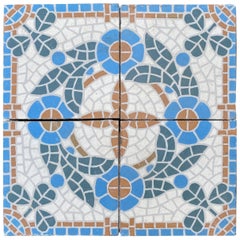Items Similar to Set of 9 Maw & Co Patterned Encaustic Tiles
Want more images or videos?
Request additional images or videos from the seller
1 of 6
Set of 9 Maw & Co Patterned Encaustic Tiles
$1,992.24
£1,475
€1,717.97
CA$2,786.65
A$3,049.50
CHF 1,599.32
MX$36,448.04
NOK 20,183.39
SEK 18,828.66
DKK 12,830.03
About the Item
Nine 6-inch patterned Maw & Co encaustic tiles (stamped) displaying red and buff patterns surrounding roundels with blue glaze around a central floret. This is just one of various sets of these tiles we are selling, sold in batches of 9 as pictured.
This set of nine reclaimed tiles could be used in a number of ways including a decorative panel or a vibrant splashback for a vintage kitchen. Alternatively, they could be used together with the other sets we are selling as floor tiles for a statement look.
Supplied loose, these 6-inch tiles are antique and as such have a characterful, timeworn look with scuffs and crazing here and there that only enhances the beauty of these striking patterned tiles.
Maw & Co. Antique Tiles
Maw & Co. was founded in 1850 by George Maw and his brother Arthur. Over the next 30 years, the business would grow into one of the most influential English floor tile manufacturers in the industry, Maw & Co. tiles decorating properties and establishments across the globe.
Initially based in Worcester, the business relocated to the Benthall Works in Broseley, Shropshire in 1852. Here they made their highly sought after encaustic tiles while experimenting with majolica glazes, transfer print, hand painting and relief tiles. In 1883, the business expanded, relocating again to a new premises in Jackfield.
At the end of the 19th century, Maw & Co. was one of the largest tile factories in the world, trading for a further 70 years before closing in 1970.
Tiles each: 15 x 15 x 2 cm (6 inches)
- Dimensions:Height: 17.72 in (45 cm)Width: 17.72 in (45 cm)Depth: 0.79 in (2 cm)
- Style:Victorian (Of the Period)
- Materials and Techniques:
- Place of Origin:
- Period:
- Date of Manufacture:1860
- Condition:Good structural condition. Light wear and minor chips from previous use as floor tiles. Minor traces of cement to sides and backs.
- Seller Location:Wormelow, GB
- Reference Number:Seller: 344581stDibs: LU2096345113042
About the Seller
4.9
Platinum Seller
Premium sellers with a 4.7+ rating and 24-hour response times
Established in 2006
1stDibs seller since 2016
766 sales on 1stDibs
Typical response time: 5 hours
- ShippingRetrieving quote...Shipping from: Wormelow, United Kingdom
- Return Policy
More From This Seller
View AllSet of 9 Maw & Co Antique Patterned Encaustic Tiles
Located in Wormelow, Herefordshire
Nine 6-inch patterned Maw & Co encaustic tiles (stamped) displaying red and buff patterns surrounding roundels with blue glaze around a central floret. This is just one of various se...
Category
Antique Mid-19th Century English Victorian Flooring
Materials
Clay
Set of 9 Antique Maw & Co Encaustic Tiles
Located in Wormelow, Herefordshire
Nine 6-inch antique Maw & Co encaustic tiles displaying red and buff patterns surrounding roundels with blue glaze around a central floret.
This set of nine reclaimed tiles could be...
Category
Antique Mid-19th Century English Victorian Flooring
Materials
Clay
Set of 9 Antique Encaustic Tiles by Maw & Co
Located in Wormelow, Herefordshire
Nine 6-inch antique Maw & Co encaustic tiles displaying red and buff patterns surrounding roundels with blue glaze around a central floret.
This set of nine reclaimed tiles coul...
Category
Antique Mid-19th Century English Victorian Flooring
Materials
Clay
Set of 9 Patterned Reclaimed Encaustic Tiles by Maw & Co
Located in Wormelow, Herefordshire
Nine 6-inch patterned Maw & Co encaustic tiles (stamped) displaying red and buff patterns surrounding roundels with blue glaze around a central floret. This is just one of various se...
Category
Antique Mid-19th Century English Victorian Flooring
Materials
Clay
Set of 9 Antique Encaustic Tiles by Maw & Co
Located in Wormelow, Herefordshire
Nine 6-inch antique Maw & Co encaustic tiles displaying red and buff patterns surrounding roundels with blue glaze around a central floret.
This set of nine reclaimed tiles could be...
Category
Antique Mid-19th Century English Victorian Flooring
Materials
Clay
Set of 9 Reclaimed Maw & Co Encaustic Tiles
Located in Wormelow, Herefordshire
Nine 6-inch reclaimed Maw & Co encaustic tiles (stamped) displaying red and buff patterns surrounding roundels with blue glaze around a central floret.
This set of nine reclaimed ti...
Category
Antique Mid-19th Century English Victorian Flooring
Materials
Clay
You May Also Like
19th Century Encaustic Tiles
Located in Dallas, TX
Colorful encaustic tiles with beautiful borders.
Category
Antique 19th Century Flooring
Materials
Cement
Antique European Encaustic Cement Tiles Pre-WWII
Located in Baltimore, MD
Encaustic cement tiles were pioneered by the French in the middle of the 19th century and relied on chemical curing rather than traditional firing. This technique had the advantage ...
Category
Vintage 1930s European Architectural Elements
Materials
Cement
Encaustic Tiles
Located in Dallas, TX
Beautiful encaustic tiles with borders (Measures: 3" x 6").
Category
Antique 19th Century Flooring
Materials
Cement
Encaustic Tiles
Located in Dallas, TX
Beautiful blue and orange encaustic tiles.
Category
Antique 19th Century Flooring
Materials
Cement
Encaustic Tiles
Located in Dallas, TX
Beautiful tan, blue, and white encaustic tiles with floral borders.
We have 105 sq ft of the field (520 pieces) + 77 linear ft of the borders (170 pi...
Category
Antique Late 19th Century Flooring
Materials
Cement
Antique European Encaustic Cement Tiles. Pre-WWII
Located in Baltimore, MD
Encaustic cement tiles were pioneered by the French in the middle of the 19th century and relied on chemical curing rather than traditional firing. This technique had the advantage ...
Category
Vintage 1930s European Architectural Elements
Materials
Cement
More Ways To Browse
Antique Brown Tiles
Used Clay Tiles
Antique Floor Tile
Antique Clay Tiles
Antique English Tile
Terracotta Floor Tile
Checkerboard Flooring
Godwin Tiles
Terracotta Hexagon
Antique Terracotta Flooring
French Encaustic Tile
Reclaimed French Flooring
Cabochon Flooring
French Terracotta Floor Tiles
Reclaimed French Tile
Vintage Floor Tile Patterns
French Oak Flooring
Reclaimed Stone Flooring
